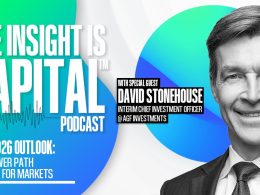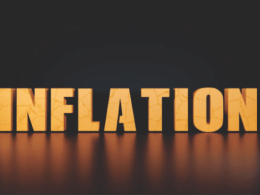by Martin Romo, Chair & CIO, and Will Robbins, Portfolio Manager, Capital Group
Stock market jitters, triggered by tariffs and recent breakthroughs in artificial intelligence (AI) by a Chinese tech company, offer a stark reminder that even the strongest bull markets can stumble — particularly when certain stocks are priced to perfection.
The question is, does the sudden flare-up in volatility signal it’s time for investors to be more cautious? Or can the powerful market rally continue?
For Capital Group Chief Investment Officer Martin Romo, the short answer is yes. And yes.
“I think about the economy and markets today as a study in contrasts,” Romo says. While expectations for the U.S. economy remain upbeat, other economies are struggling. The impact of Trump administration tariffs and other policies add uncertainty to the picture, as do geopolitical tensions. Equity market returns have been robust and volatility low, but expectations are high.
“So in this environment, I am both constructive and cautious,” notes Romo, who serves as a portfolio manager on Capital Group U.S. Equity FundTM (Canada). “I am thinking more about balancing opportunity with risk and being mindful of valuations.”
Here are four keys for investors looking to balance a constructive view of stock markets with a measure of caution.
1. We are in rarified air
Stocks have been on a tear since the end of 2022. While investors were bracing for a recession, the S&P 500 Index took off, soaring 26.2% in 2023 and 25.0% in 2024 in U.S. dollar terms. It’s the first time the S&P 500 recorded consecutive years of 20%-plus returns since 1998–1999, the tail end of the dot-com bubble.
But any comparison to the tech bubble of 1999 must be considered in context: Today’s tech giants are generating solid earnings growth. For example, NVIDIA, maker of the most advanced semiconductors needed to power artificial intelligence, saw profits more than double from a year earlier to US$19.3 billion for the quarter ended October 31.
This is not to suggest that investors should be bracing for a major market downturn. The economic backdrop remains generally positive, bolstered by strong wage growth, steady interest rates and an administration with a growth agenda.
A look back at S&P 500 Index returns since 1928 shows the market was positive 73% of the time, or an average of three years out of four. Stocks sustained negative annual total returns in only 27% of all years.
Market returns have been overwhelmingly positive

Sources: Capital Group, Standard & Poor's. As of December 31, 2024. Returns are in USD.
Of course, high expectations for today’s market leaders have translated into elevated valuations, both for the market broadly and for many tech companies. The price-to-earnings ratio for the aggregate S&P 500 was 27.7 as of January 31, 2025. “Valuation matters again,” says Romo. “I remain constructive, but with many stocks priced for perfection, I am expecting lower returns going forward.”
2. Market surprises are a fact of life
Elevated valuations, coupled with the heavy concentration of market gains in a handful of U.S. tech giants may be amplifying risk.
The temporary January 27 selloff was triggered by surprising reports that Chinese tech start-up DeepSeek had developed a chatbot at a fraction of the cost of leading U.S. AI tools. The news called into question the prudence of multibillion dollar investments in artificial intelligence infrastructure. NVIDIA and chipmaker Broadcom suffered some of the largest declines, plummeting 17% each. Other participants in the so-called AI stack — from tech companies to power generators to industrials — also recorded sharp one-day declines.
“I was brought up in a world where our mantra was that trees don't grow to the sky,” says Will Robbins, an equity portfolio manager for Capital Group Capital Income BuilderTM (Canada). “While I still believe that's true, I do think we are in a different paradigm today.” For example, with respect to many of the leading tech innovators, there are winner-take-all economics in a number of businesses. I have confidence that there is a long runway for some of those companies, while others are less attractive based on valuation or concerns I have about their competitive moats.”
Trump administration tariffs on a range of goods including produce, automobile parts and smartphones then initiated another selloff amid fears of a developing trade war. The introduction of tariffs on goods from Canada, Mexico and China, and the threat of retaliatory tariffs, has added uncertainty. But the planned tariffs on Canada and Mexico have been paused for 30 days as of February 4.
While the longer term impact of the tariffs and DeepSeek’s breakthrough remain unclear, they serve as stark reminders that market surprises are not surprising. What’s more, stocks with elevated valuations can be sensitive to even mildly negative news.
Market declines have occurred in every year

Sources: Capital Group, Standard & Poor's. As of December 31, 2024. Returns are in USD.
3. Downturns are regular occurrences
While declines are often jarring, it’s worth remembering that market volatility has been relatively tame. Against a backdrop of record-setting highs, the S&P 500’s largest intrayear decline in 2024 was about 8%, and the market rebounded within days.
But a look at history shows that market downturns have been somewhat regular events. Corrections — declines of 10% or more — have occurred about once every 18 months and declines of 5% or more have occurred about twice a year.
“Prudent investors should be prepared for the possibility of a correction in 2025,” Romo says.
Market declines are a normal and frequent feature of investing

Sources: Capital Group, RIMES, Standard & Poor's. As of December 31, 2024. Average frequency assumes 50% recovery of lost value. Average length measures market high to market low. Past results are not predictive of results in future periods. Based in USD.
4. It’s a good time for balance
Given this backdrop, it may be time for investors to seek a balance between growth of capital and capital preservation. What does that look like?
“We are no longer in an either-or market,” Romo says. “You can’t just focus on one sector, one asset class or one place in the world. Today, it is essential to pursue opportunities in growth and value, U.S. and international, large and small caps.
That’s why I'm looking at the favoured and the forgotten. In other words, I am finding opportunities to invest in technology leaders, as well as financials, industrials and even energy companies.”
Robbins, a self-described defensive investor, says he always weighs opportunity in the context of risk, paying close attention to valuation and a company’s competitive landscape.
“Although it's not always in favour, I always try to win with defence,” Robbins says. “When we're reaching new highs every day, it's a little less attractive, but I know it will be valuable at some point in time. And today I am finding a range of opportunities to invest in strong businesses, like companies in power generation and enterprise consulting, without the eye-popping valuations we see among many tech leaders.”
It may not happen in 2025, but we know that bear markets come and go. “When they do,” Robbins adds, “that's where I think investors will recognize the role that a more defensive, dividend-focused approach can play in portfolios.”
The bottom line: Periods of market volatility are inevitable, but not permanent. When markets are soaring, they can be sensitive to even modestly disappointing news. “For patient investors who maintain balance in their portfolios and stay focused on the long term, that market uncertainty is more like background noise,” says Romo.
Martin Romo is chair and chief investment officer of Capital Group. He is also an equity portfolio manager with 32 years of investment industry experience (as of 12/31/2024). He holds an MBA from Stanford and a bachelor’s degree from the University of California, Berkeley.
Will Robbins is an equity portfolio manager with 33 years of investment industry experience (as of 12/31/2024). He holds an MBA and a bachelor's degree from Harvard.
Copyright © Capital Group















